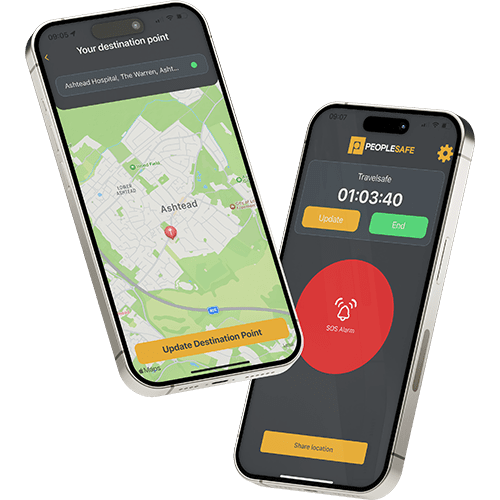8 Employer Benefits of Workplace Wellbeing
Wellbeing is a measure of health, satisfaction and happiness. When it comes to workplace wellbeing, this refers to the state of employees’ mental and physical health resulting from dynamics within the workplace. This includes their relationships with colleagues, their workload, work environment and many other factors.
Having an effective health and wellbeing strategy as part of the wider people strategy has the power to have a hugely positive impact on your business.
Investing in the mental and physical health of your employees will not only improve their quality of life, but will help to create a more engaged, motivated, and high-performing workforce. A report by Deloitte revealed that happy workers are:
- 20% more productive,
- 34% less likely to leave their jobs, and
- 37% less likely to take time off sick.
Additionally, wellness programmes can help to boost morale and increase teamwork, resulting in increased output and boosting the overall success of your business. These are just a few of the potential benefits a workplace wellness programme can have:
1. Reduces Stress
Work-related stress is one of the main causes of mental and physical ill health in the UK and accounts for around 18 million working days lost annually. When stressed, our immune systems are weaker and we are less able to produce high-quality work, so having systems in place to manage and reduce stress is vital.
Encouraging social engagement and mindfulness can provide employees with tools to manage their stress. Additionally, tools such as a personal safety app can reduce stress when commuting or working alone.
Less stressed employees exhibit reduced absenteeism and are significantly more effective when they’re at work, making it a win-win for everyone.
2. Happier staff
With full-time employees spending around a fifth of their week at work, a positive working environment has the potential to have a huge impact on their mental health. Research has found that happier staff are more motivated, and therefore have higher output.
Staff tend to feel happier when they feel valued at work and think positively about their employer. Therefore, making investments in the well-being of your staff and the Employee Experience (EX) is likely to increase overall happiness, productivity and morale.
3. Reduces illness and absenteeism
As well as increasing mental health, wellness programmes can have a positive impact on your employee’s physical health. Employee Assistance Programmes (EAPs) often provide access to resources such as exercise classes, healthy eating guides and support for becoming more active. Combined with a work environment that celebrates making wellbeing a priority, employees will be encouraged to develop healthy habits which reduce the risk of illness and absenteeism.
Eating nutritious foods, becoming physically active and reducing stress levels have been proven to provide sustained energy and improve our immune systems. According to a report, companies conducting wellness programmes have experienced a steady decrease in short-term sick leave by 6-32% among their employees. By default, this means staff will become ill less often and attendance will increase.
4. Strengthens Community & Boosts Morale
When work becomes tedious and repetitive, it’s easy for morale to slip. Workplace wellbeing activities that encourage friendly competition between colleagues can help to build personal relationships between staff, while those performing well will gain a sense of accomplishment.
Group activities such as health and fitness classes or company quizzes encourage employees to get connected and work together. As employees come together from across all departments, friendships may foster among members of your organisation who may never have come into contact before.
The development of personal relationships can have a positive effect when it comes to working as a team for work-related goals, while employees who feel a part of a community are more likely to feel positive coming to work and subsequently stay in the organisation for a long time. Research has shown that employees are up to ten times more likely to stay in a current role for friendships than for a pay rise.
5. Enhances Productivity
Research has shown that regular exercise and breaks between working can boost brain function due to increased oxygen flow, while healthier employees (both physically and mentally) tend to be more productive as they are more well rested. Taking part in wellness activities at work can also boost productivity by breaking up the workday, allowing employees to return to work feeling more productive and delivering a higher standard of work.
Additionally, by improving psychological feelings of safety, such as through the introduction of a personal safety devices, productivity can be further increased by 12% due to enhanced feelings of confidence, trust and engagement.
Download Employee Safety Gap Report
6. Attracts new talent
Aside from salary and flexible working, wellbeing packages are consistently ranking among employees’ top priorities when evaluating prospective employers. This is backed up by research conducted by Paychex and Future Workplace, which revealed that 62% of all employees identified wellbeing benefits as a key factor in deciding whether to apply for a new job. This was especially true for Gen Z, where 67% agreed that wellbeing benefits will be a priority for them in evaluating new job offers.
By including wellness benefits in your compensation package, you can attract a wider pool of potential candidates for any job role.
7. Increases job satisfaction and retention
Having the right benefits in place that increase staff happiness and feelings of safety can significantly increase job satisfaction and how favourably staff think of their employer. Our own research has shown that employees who experienced a negative event at work were on average 9% less satisfied with their job, whereas 48% of employees surveyed said that they would see their employer in a better light if offered a personal safety service, such as Peoplesafe.
Organisations can also use wellness programmes to create a strong sense of loyalty among employees and improve retention. 45% of employees in small and medium-sized businesses claim that wellness programmes would make them stay with their employers a lot longer.
Increased loyalty and reduced staff turnover mean reduced recruitment costs. It’s estimated that staff turnover costs UK businesses £4 billion per year, with the average employee costing around £30,000 to replace. Reducing staff churn can therefore save businesses a significant sum of time and money.
8. Enhances reputation
Investing in workplace wellbeing sends a strong message not only to employees, but lets customers, prospects, and the public know that, as a business, you value your staff.
In a world where there is so much choice for consumers, standing out against the competition is key. When choosing between products of equal price and quality, 65% of consumers prefer to buy from brands that treat their employees well. This shows that investing in the wellbeing of your staff can pay off, attracting more customers to you.
How to Improve Employee Wellbeing
Every employer has a responsibility to provide a workplace where employees feel happy, valued, and supported. This includes taking care of employees’ mental health and wellbeing, as well as their physical wellness.
When used effectively, wellbeing programmes give employees a range of tools, support, and incentives for them to take positive steps in their own health. However, to get the full benefit, employee wellbeing priorities should be integrated throughout your organisation, and embedded into your culture, leadership and people management.
Some initiatives to consider are:
Employee Assistance Programmes
Employee Assistance Programmes are a simple way to let employees know that their health is a priority to you. Many offer confidential services such as 24/7 GP and mental health helplines that employees can use whenever or wherever they like. This will help staff to overcome issues that may impact their performance, wellbeing or health.
Some programmes will also offer health cash plans or private health insurance which will provide your workforce with access to faster treatments, free eye tests and dental treatments. This will help to ensure health problems get solved as quickly as possible, reducing sick days and supporting employees in feeling their best while working.
In-house Activities
Running some wellbeing activities to break up the work day and increase relationship building between employees is a simple way of engaging staff. Activities can consist of anything from a lunchtime workout class to a team quiz or a bake sale. When running this sort of activity, it can be useful to try and find group interests within your specific workforce. For example, a reading, cooking or running club.
Flexible Working Hours
Since the coronavirus pandemic, employees are increasingly expressing the desire for flexible working hours, with 77% agreeing that flexible working is at the top of the list of workplace perks they value. Flexible working considerations allow employees to lead a more balanced lifestyle, making time for other important factors such as private appointments and childcare.
Being lenient with work hours doesn’t have to disrupt the whole working day, it could simply mean allowing employees to shift their schedule forwards or backwards by an hour to accommodate external commitments. Allowing employees to take the time they need for personal commitments helps to increase motivation and improve productivity by encouraging employees to work when they have fewer distractions and will improve how they think about your organisation as they will feel more respected and valued.
Office Space
Mental wellness has become increasingly important, especially in the workplace where employees spend a significant portion of their time. Providing an office that promotes mental wellness is crucial for a successful workplace. Office spaces that are comfortable and well-designed can have a positive influence on productivity and team morale.
Safety Apps
Our research found that 60% of people feel unsafe commuting on public transport during unsociable hours and that 21% of employees have personal safety concerns at least once per week. It is clear that employees need more support from their employers and would see them in a better light if a solution was offered. Personal safety technology can play a critical role in protecting employees, reducing stress and addressing the safety concerns held by many.
“My employer could provide personal alarms, so it could be used if it’s needed in an emergency, which would make me feel more protected and happier.” – 45-54 Male, Healthcare worker
Over half of the employees we surveyed agreed that employers have a duty of care outside of working hours, so offering a solution to employees’ safety concerns is a straightforward way to fulfil this demand.
The Peoplesafe SOS App is a simple and cost effective way to offer 24/7 support to your staff. Unlike other personal safety apps, when an alarm is raised via Peoplesafe, the user will be immediately connected to a trained ARC Controller with the ability to bypass 999 and contact emergency services where necessary.
With Travelsafe, the app also enables users to share their live location with chosen contacts via SMS, WhatsApp or Facebook messenger, helping to provide peace of mind on their journey, anytime and anywhere.
Download the Peoplesafe SOS App Ebook
Calculate how much you could save on recruitment and retention by implementing a personal safety service:







